Music Theory For Non-Musicians
…if there was ever an art where breaking the rules is one of the rules, it’s music.
redditor u/COMPRIMENS
S2 | E4 – What Makes Rock & Roll, Rock & Roll ?
Rock & Roll is sex. Sex is rock and roll.
I mean that literally. The phrase “rocking and rolling” was African American slang for sex long before the genre of music existed.
Why would that term become the name for this genre?
Well, just listen to it.
It’s raucous and uninhibited and exhibitionist. It’s not something for shy or repressed musicians. You gotta put yourself out there. Little Richard wasn’t a shrinking violet. Neither was Elvis Presley or Wanda Jackson.
For years, I heard that the first rock & roll song was Rock Around The Clock by Bill Haley & His Comets, released in 1954. The current conventional wisdom says it was 1951’s Rocket 88 by Jackie Brenston And His Delta Cats.
However, when we look at the distinguishing characteristics of rock & roll, we’ll find earlier examples.
If you have fifteen minutes, listen to this compilation of songs from before 1950 that could easily fall into the rock & roll category.
Rock and roll is a mixture of three genres we’ve talked about already in this series: blues, country, and swing.
There are many ways to interpret the timelines.
But I think we need to talk about the missing links of jump jive and western swing.
Jump jive took the swinging rhythm of, well, swing and added the tonality of blues. By tonality, I mean the use of 7th chords and blue notes. Jump jive often used the 12 bar blues chord structure, too. Notable jump jive stars include Louis Jordan, Wynonie Harris, and Big Jay McNeely.
Western swing combined the swinging rhythm of, well, swing with the instrumentation, twang, and close harmonies of country. The mixture of these two, combined with a little jazz and a little polka, created western swing. Artists like Bob Willis And His Texas Playboys, The Skillet Lickers, and Hank Thompson popularized this mix through the 1920s, 30s and 40s.
And jazz itself had a branch that was going in a rocking new direction. With innovators like the magnificent guitarist Les Paul and his invention of multi-track recording, jazz revved up some old standards into a new kind of pop. His 1951 take on How High The Moon predicts the guitar-centric sound of rock & roll.
Now, I can’t say for sure that someone intentionally combined blues, country, and swing to make rock & roll. It happened more gradually and organically, but rock & roll has the tonality of jump jive, the guitar-forward instrumentation of western swing, and the danceability of both. But it didn’t really become rock & roll until the swing was updated to a backbeat.
When a drummer plays a simple swing beat, he kicks the bass drum on beats 1 and 3 of a four beat measure, and hits the snare on beats 2 and 4. His right hand generally plays a cymbal throughout the measure with a skipping nature. Dah-dada-dah-dada-dah-dada-dah-dada-dah.
In a backbeat, the bass and snare drum parts stay the same, though with more emphasis on the 2 and 4, and the right hand hits steady eighth notes, usually on the hi hat. The backbeat drives harder than swing. Boom-crack-boom-crack-boom-crack-boom-crack.
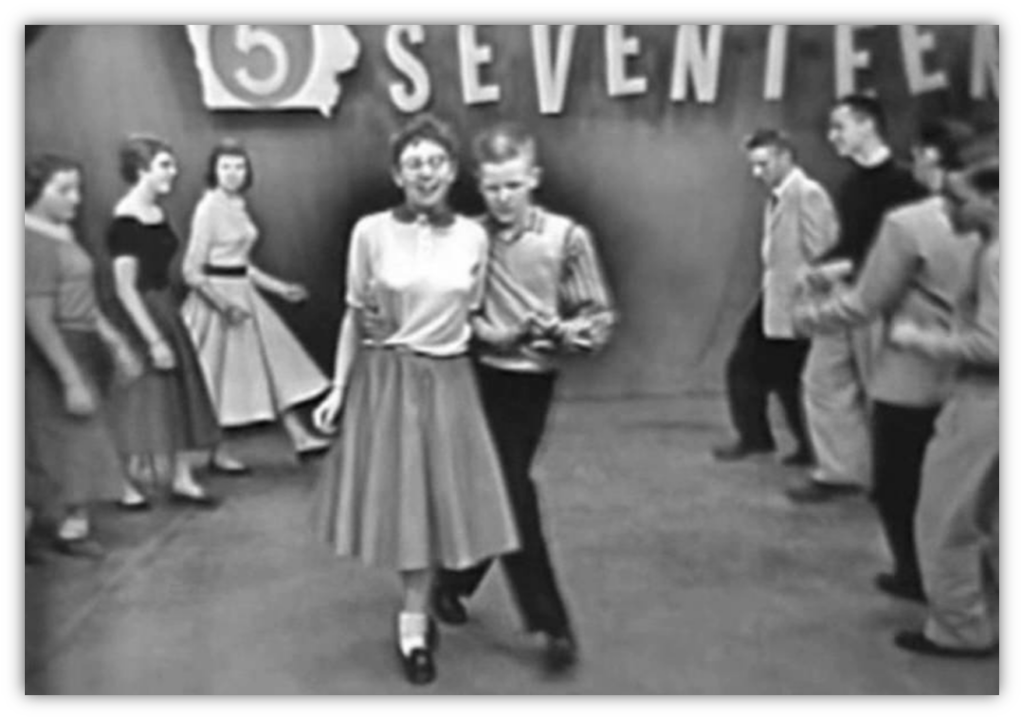
This 1- 2– 3- 4 beat really appealed to young people. Its drive was perfect for enthusiastic dancing and blowing off excess adolescent energy.
Plus, the flush of hormones at that age makes you interested in rocking and rolling.
Older people thought it was simplistic and not really music. Simple, yes, but music?
Also, yes.
Kids liked rock & roll’s rebellious tone. Anything that annoys your parents, anything that differentiates you from them, must be good. Teenage rebellion now had a soundtrack.
It was the start of youth culture in America.
And we can’t talk about rock & roll without mentioning race.
Blues came from black culture, country came from white culture. Certain conservative circles thought the two should never intertwine. Again, some folks thought rock & roll wasn’t music, calling it “jungle music,” and worse.

It was easy to dismiss rock & roll with such invectives when it was performed by Little Richard, Chuck Berry, and Fats Domino.

It got harder when white artists like Bill Haley, Buddy Holly, and Elvis Presley sang it.
Then came the phenomenon of clean cut white performers doing covers of rock & roll songs by black artists. Pat Boone took Fats Domino’s Ain’t That A Shame and Little Richard’s Tutti Frutti to higher chart positions than the originals. Boone later claimed that “it didn’t make sense” for him to do Tutti Frutti but his record label insisted. Whether the labels were racist or just knew a sizable portion of the American record buying public was racist is up for debate.
A much smaller portion of the record buying public weren’t American at all.
One of the biggest ports in the United Kingdom is Liverpool. And the musicians in that area loved this new foreign sound.
Liverpool and the surrounding area produced rock & roll hitmakers like Gerry And The Pacemakers, Billy J. Kramer And The Dakotas, and The Searchers. There was also a band called The Beatles. You may have heard of them.
In the U.K., it wasn’t a matter of race so much as class.
These bands from the north of England took to rock & roll and altered it slightly for working class pub patrons. They intensified the backbeat and used vocal harmonies that seem based more on traditional music hall than on American country or gospel. Still, it didn’t sound like any other British music of the time.
This music, completely new to anyone, became a dividing line between not just the young and old, but the haves and have nots. Young working class people, who saw no future in an economy still struggling after WWII and were tired of hearing about how great the victory was, now had something to rally around. Youth gangs like the Mods and the Rockers had their own favorite bands to further define their cliques.
That urge to have something in common, something different from the previous generation, something that mattered, was as important to British youth as it was to American kids.
Young people flocked to see the bands perform and buy their records. It turned into Beatlemania.
In America, that frenzy was contagious, too. The massive popularity of English bands playing American music was called The British Invasion.
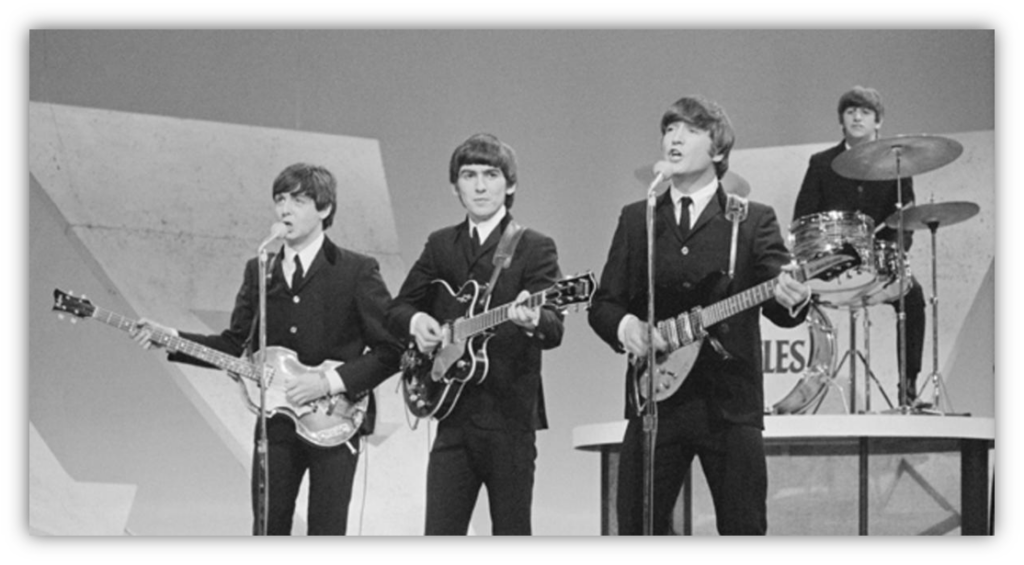
I remember watching The Beatles on The Ed Sullivan Show and asking my mother why all the girls were screaming. She said it was because the girls liked the band. That made no sense to me because, as a five-year-old, screaming meant fear.
I did like the song though.
Older people didn’t get it, which helped the popularity of a different genre I’ll cover next week, but there was no doubt that the song by Danny And The Juniors was right: Rock & roll was here to stay.
Except it wasn’t.
Like all genres, rock & roll evolved into something new.
Somewhere along that path, the “& roll” part got lost.
And that gives us yet another genre to talk about in the coming weeks.
Suggested Listening:

Rocket 88
Jackie Brenston and his Delta Cats
(1951)
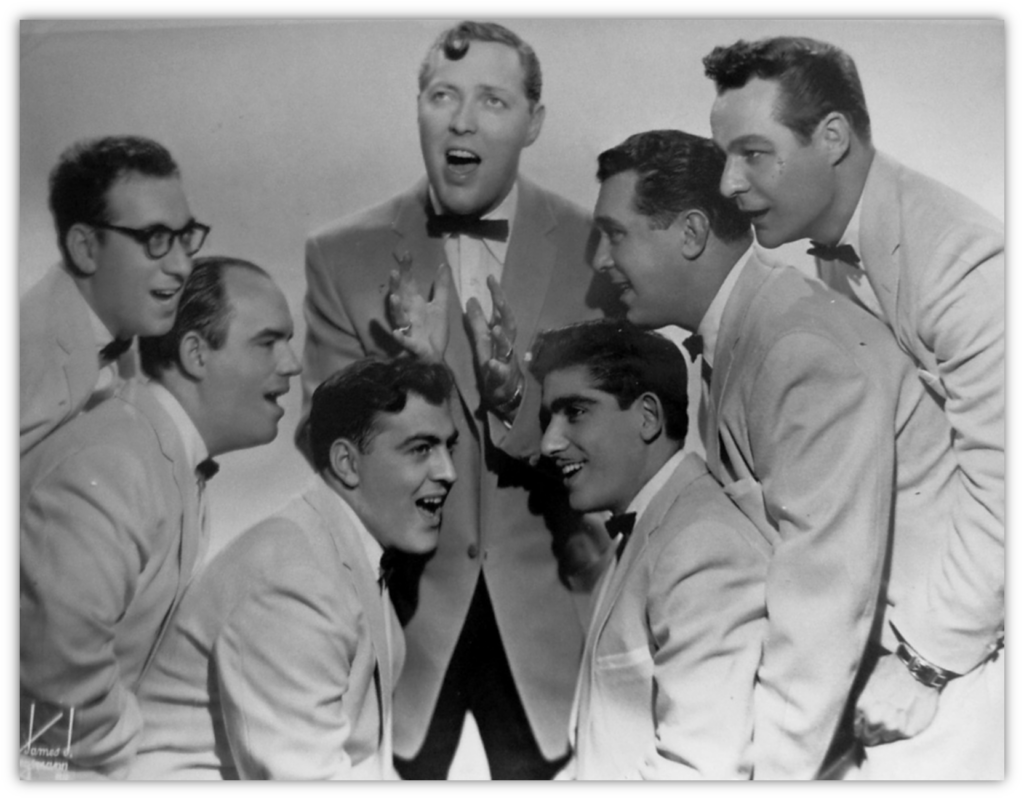
Rock Around The Clock
Bill Haley & His Comets
(1954)

Milkcow Blues Boogie
Elvis Presley
(1954)

Tutti Frutti
Little Richard
(1956)

Roll Over Beethoven
Chuck Berry
(1956)

Whole Lotta Shakin’ Goin’ On
Jerry Lee Lewis
(1957)

Hard Headed Woman
Wanda Jackson
(1958)

Rip It Up
Gene Vincent
(1958)

Rock & Roll Is Here To Stay
Danny And The Juniors
(1958)

Shaking All Over
Johnny Kidd and The Pirates
(1960)

She Loves You
The Beatles
(1963)
(Let the author know that your liked their article with a “Heart Upvote!”)


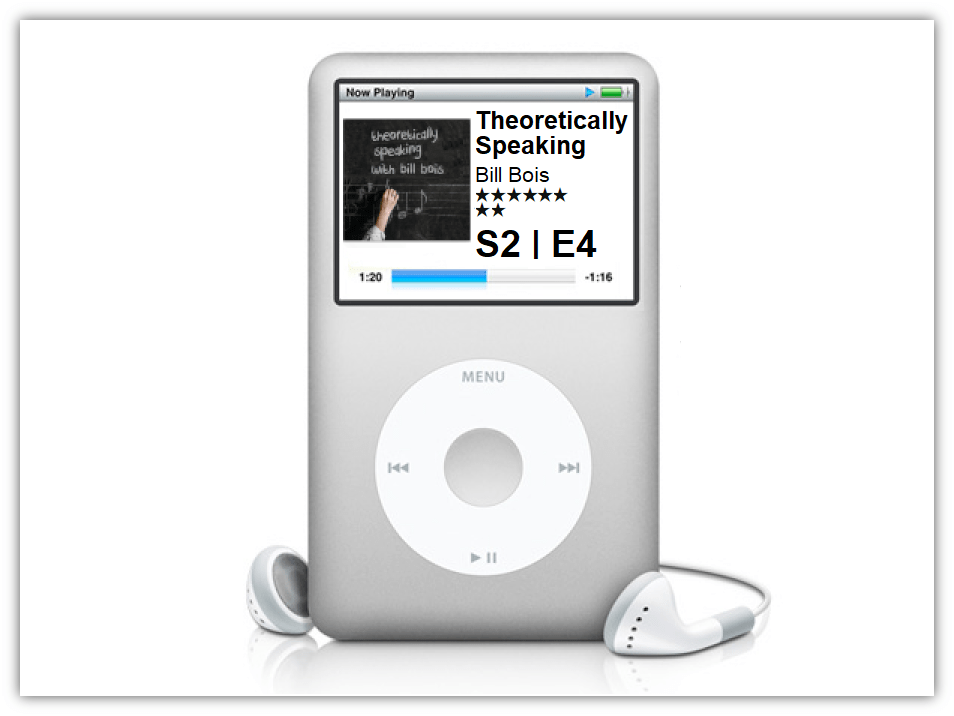
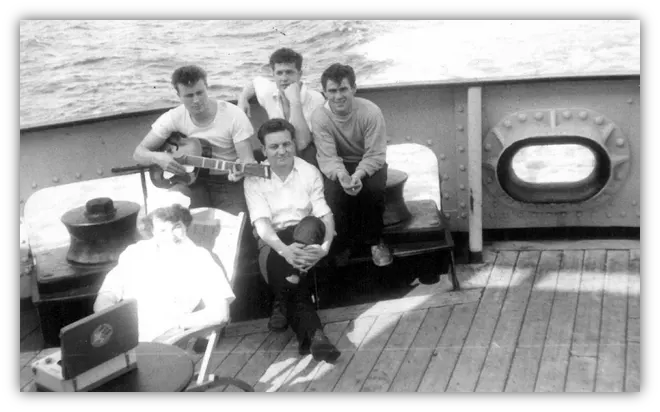

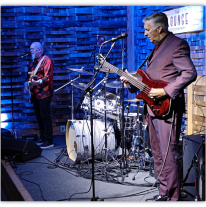
Great set — I know how to spend the weekend!
I want to find a good Danny and the Juniors deep cut.
“Milk Cow Blues Boogie”? Wanda Jackson? You are a man with taste.
Truly enjoying this series, Virgin-er-Bill! Hard to believe that Rocket 88 is the seminal song of my birth year.
Informative and entertaining as ever. Some great stuff in that 15 minute compilation, some I know, some I don’t. Like you say, it blurs the lines of when rock and roll became a thing as there’s plenty in there that doesn’t sound out of place in the genre.
Danny and the Juniors might have sang that rock and roll is here to stay but that photo does not suggest sex. Accountants out on the town maybe but compare them to Gene Vincent in the same year and its like they come from a different world. I guess thats part of the sanitisation of rock and roll to make it palatable to a bigger market and not scare the oldies too much.
Little Richard shouting ‘Awopbopaloobopalopbamboom’ might be the single most exciting thing in the history of music.
V,
This was FUN! I listened to the compilation before reading any further, and for a while I was thinking about what the songs of the 20s were missing, which you later verified!
Around 1938 was the first song I thought fit the “rock ‘n roll” label (“That’s All”).
Not many questions here, but what a walk down memory lane – my dad used to sing that 1940 Hank Williams song all the time when I was a kid.
Thanks.
For years I thought “Move It On Over” was a George Thoroughgood original. And I had no idea until this week that Hank Williams did it in the 40s! It’s a pretty great version, too.
P.S. I’m looking forward to Season 4 of this column when I’m reading you breaking down Sludge Metal.
Metal has so many subgenres that I could be doing this for the rest of my days!
You know, I’ve always felt defining ‘rock n roll’ was like explaining how the sky is blue. It just is! And yet, you managed to explain the genre’s origins in a way that makes complete sense and totally logical in its growth. Excellent work, VDog.
I definitely love the fact you trace it back to the real origins, beyond the lazy Bill Haley milestone so many others tend to point to.
So was Alan Freed just repeating a term he’d heard blacks throughout the South calling this type of music, and did no such thing as “coin” the term Rock and Roll? I always bristle when I see Feed credited with coming up with that term, because I just knew it had to be borrowed from somewhere.
Man, I tell you what VDog – I truly love these postings, thank you!
We can credit Freed with popularizing the term, but I’m pretty sure someone else came up with it. The more I research this stuff, the more racism rears its ugly head. I think a lot of white people were more comfortable with giving Freed and Haley credit for something black people did. I can’t prove that, but it sure seems that way.
Popularizing is the word. There may have been people who were barely exposed to R&B boogie woogie. But when “Rock around the Clock” explodes on the nation, becoming accessible to everyone via more radio exposure than previous race records, there are a lot of people who can point to it as THEIR first rock and roll record. It is fun to dig deeper and learn all about what inspired rock, but for a lot of folks, since white artists got more exposure (for good reasons or for bad), it’s just what the majority of people experienced. Over time we’re helping make history more representative, I hope.
If you want to have some fun, ask a casual music fan:
Often, you’ll get Rapture, The Hustle, and Iron Man for responses, all of which I’d strongly argue are technically incorrect, are not nearly as “landmark” as the “real” answers.
And somehow diminish what the pioneers of each genre were trying to do.
But to your point: it’s really about the listener’s experience – THIER first record. So as far as they are concerned, their answers are correct.
Good observation, Link. And nice to see you here.
Sad that I missed this one!
Great post on one of the hardest topics in music to write about. It’s both hard to say anything new about the birth of rock n roll (as so much has been written already) and hard to capture the complicated synthesis of styles and subcultures that came to fall under the label.
One of the dimensions that I only recently came to appreciate was the softer dimension. Rock n roll was always meant as a dance music, particularly for teens and young adults…but slow dancing with a sweetheart was an important component of that party dynamic. This is why we have The Flamingos and Frankie Lymon & the Teenagers giving us soft ballads as well as the more upbeat doo-wop tunes. Prelude to the sex, perhaps… 😀
https://www.youtube.com/watch?v=ogfauSxvT7E
You didn’t miss it. It’s still here. I’m afraid the pie is all gone but I’ll make some fresh coffee.
One of the most beautiful songs ever recorded, in my opinion at least, is The Flamingo’s version of “I Only Have Eyes For You.” It’s slow and dreamy, yet undeniably rock & roll. Sure, it was written for jazz vocalists, but The Flamingos made it into doo wop, one of the many subgenres I couldn’t get to. If that song doesn’t make you want to hold your baby close and sway, it’s time to break up.
So true.